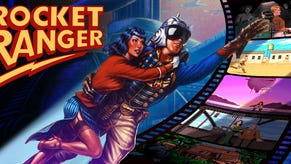Face-Off: Grand Theft Auto San Andreas
UPDATED: Analysis revised - US PS4 emulation is smoother than UK code.
UPDATE 8/12/15 4:52pm: We've been looking at more PlayStation 2 titles running under emulation on PlayStation 4, and it now seems clear that all the UK code we've tested is running at 50Hz with a crude frame-blending 'upscale' to the 60Hz output. We made an error in the original analysis below - GTA San Andreas under emulation does have some frame-pacing issues, but much of the judder we encountered is actually a result of the frame-blending, registering to our eyes (and our analysis tools) as unique frames when in fact they are simply the interpolated results of two images - we did think that it may be an artefact of the emulator working with PS2's original motion blur effect, but this is definitely not the case. Credit goes to commenter Malek86 for noting that his copy of Twisted Metal Black is definitely European code, albeit outputting at 60Hz - a situation we have also confirmed with Dark Cloud. This was originally a 60fps game in NTSC territories, running at 50fps on the PS4 emulator, then frame-blended back up to 60fps. As you may imagine, this is not ideal.
We decided to produce a GTA San Andreas analysis highlighting the difference between our 'NTSC' and 'PAL' releases. We also cleaned up a short section of footage to confirm that the base frame-rate of San Andreas on our UK PSN code is indeed 25fps. And to conclude, we re-ran the original frame-rate test between PS2, PS3 and PS4 versions of the game, all using 60Hz code.
Obviously, for those of us in Europe, this is a somewhat disappointing state of affairs. The PAL territories were blighted with poorly adapted code that often featured letterboxing, slowdown or other artefacts in the transition from 60Hz to 50Hz. In terms of the PS2 titles emulated on PlayStation 4, performance is the only applicable issue here, but it does make a tangible difference. We've tested all three GTA titles now and it's clear that the situation isn't exactly optimal. In fact, we do recommend buying from the US store to get the best possible experience with the emulated PS2 titles. Now, there are perfectly good reasons why Sony has made this decision - foreign language translation for European countries for example - plus as Malek86 points out, there are some censorship issues to contend with. But it seems that Sony has had to get these titles re-certified by PEGI anyway, and we would hope that the firm does consider bringing native 60Hz titles to its current-gen 60Hz console in the future.
Original story: It's been over 11 years since the initial launch of Grand Theft Auto: San Andreas on PS2, so it might seem rather odd for it to receive the Digital Foundry Face-Off treatment - but here we are looking at two new PlayStation releases in 2015. First up, there's the somewhat bizarre release of a remastered version of the game for PlayStation 3, arriving a year after the Xbox 360 edition. However, of more interest is San Andreas' status as one of the first PS2 classics to arrive on PlayStation 4, running under emulation.
We've already had a chance to preview what the emulator is capable of in terms of its core feature set, plus we've revealed that it is capable of running older software with higher frame-rates than the same code running on original hardware. But what we haven't really had is a truly stringent challenge for Sony's new emulator - until now.
Let's kick off by talking about image quality and resolution. When we looked at the Star Wars titles running under emulation on PS4, we noted that the system wasn't rendering at native 1080p - instead the code took the basic 640x448 pixel-count of the original games, then doubled resolution on each axis, before upscaling to 1080p. The upscaling process is curious in that there was certainly the impression that some form of anti-aliasing was in effect, with jaggies dealt with rather well.
Looking at San Andreas on PlayStation 4, we were curious to see if the emulation code had been improved. After all, Sony is talking about 'up-rendered 1080p' for the emulator. However, from what we can see, little has changed. Resolution is obviously improved, but it's not native 1080p - the sub-pixel break-up on power-lines in Los Santos is a real giveaway. However, what is different is that this time there's no 4:3 presentation. The game's widescreen mode is automatically engaged, so the upscale goes all the way up to 1920x1080, filling the entire screen.
We captured the original PlayStation 2 version in 16:9 mode, cropped the 720x480 output to the core 640x448 render output, upscaled that to 1920x1080 and got the same presentation as the PS4 emulation - albeit at a somewhat reduced pixel count. There's an additional wrinkle too. One of the original release's optimisation methods involves rendering the framebuffer using a lower precision pixel format, giving a somewhat distracting stippled effect. PlayStation 4 has no need to cut corners in this way, so the stippling is entirely absent, giving a cleaner presentation.
In terms of performance, it's a bit of a mixed bag. The good news is that the frame-rate improvements we saw previously are still effect here on a much more challenging title. San Andreas regularly drops frames on PlayStation 2, and some of the latency spikes in the title are quite remarkable - we're looking at anything up to 100ms stutter. PlayStation 4 sticks doggedly to the 30fps cap instigated by Rockstar North - but something is amiss. This is actually the first emulated title we've seen on PlayStation 4 that has any kind of frame-rated cap in place and the bad news is that the current emulator does not seem to have any kind of proper frame-pacing in place.
San Andreas on PS2 may well have highly variable performance when it is under load, but when the title hits its 30fps target, each new frame persists for 33ms, giving a consistent update to the gameplay. The emulator works differently, sending out new frames to the display as soon as they are ready while at the same time limiting itself to 30fps - the end result is an uneven delivery of frames, with new images arriving at 16ms, 33ms or 50ms intervals, introducing unwelcome judder. Of all the titles released so far in the PS2 classics range, Rogue Galaxy is the most notable 30fps release. On original hardware, it locked to the target frame-rate and ran very consistently - we'll be interested to check that out to see if the same issue with the emulator occurs there.
In the performance video above, you'll see that we've added in the recently released PS3 San Andreas remaster into the mix - and it's a curious beast. In terms of its raw performance, it too targets 30fps, but while gameplay mostly works out as it should, there are small pockets of frame-pacing judder, though it's not really a distraction. More interesting is that cut-scene frame-rates are somewhat wobbly to say the least - the remarkable reality here is that the remaster struggles to the point where the original PS2 game can run more smoothly. Thankfully once control is handed to the player, we're back at 30fps and consistency is considerably improved overall. In fact, it may well be the most stable performer of the three.
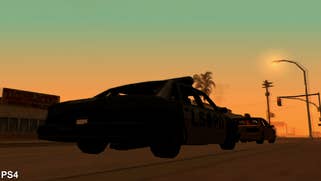
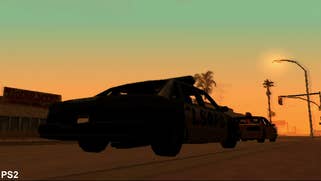
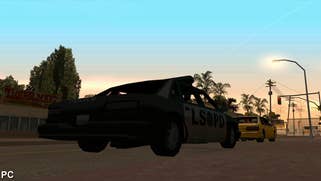
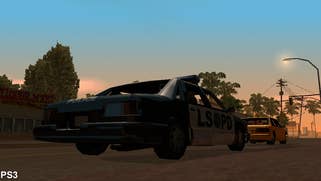
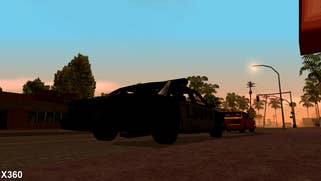

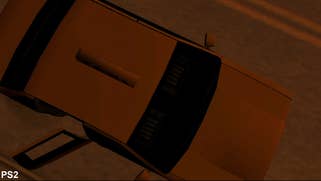
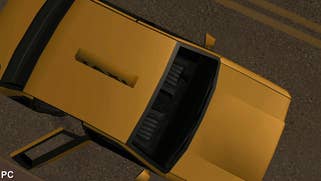

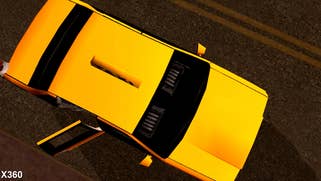


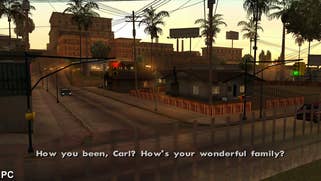

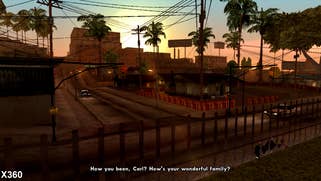
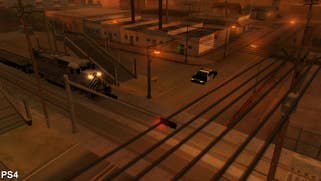
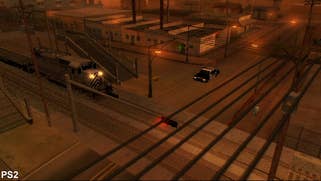


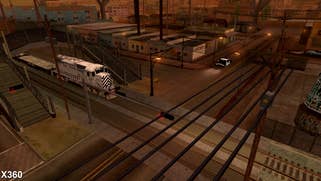

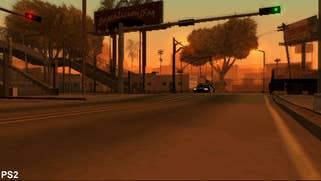

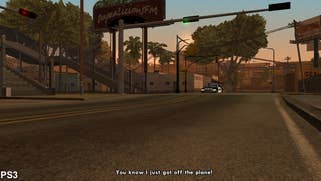



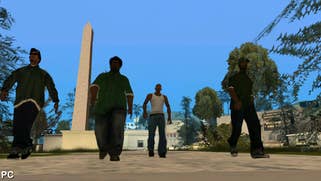
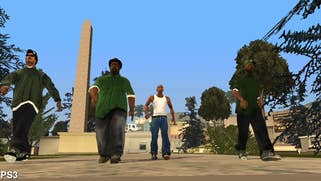
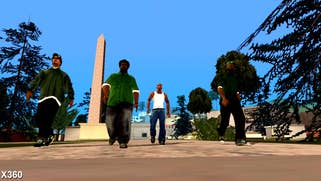
The remaster clearly has a range of tangible advantages when stacked up against the PS2 code - whether that's running on original hardware or under emulation on PlayStation 4. The control system is modernised, textures are noticeably improved, proper 3D rendered shadows are in play, and draw distance is pushed out substantially. Model geometry also gets an upgrade in places, while the original release's distinctive colour palette is expanded significantly. The world of GTA San Andreas is brighter, cleaner and more vibrant in this remastered guise - plus the UI gets a complete overhaul. All of this should look familiar to any one who has played the game on iOS and Android, as it looks as though the remaster is ported over to PS3 lock, stock and barrel from the mobile release - just like the Xbox 360 version we took a look at last year, though it does seem that the console remasters get enhanced draw distances compared to the mobile version.
Initial impressions suggest that the PlayStation 3 version is to all intents and purposes identical to last year's Xbox 360 release, but there are some curious differences - field of view in cut-scenes looks odd on Xbox 360, and some minor bugs - such as a missing texture in the intro sequence we noted - are corrected. The Xbox 360 release has had a title update since we looked at it last year (a whole 14MB - remember the days of low bandwidth patches?) and it seems that there have been some performance improvements since we first looked at the game. Also interesting, having taken a closer look at it, is that it seems to feature a little super-sampling - the 720p image seems to be downscaled from 1440x820 or something close to it.
Technically, the remaster is the best version of San Andreas you can buy on console - though GTA purists do have many issues with the work carried out on the game. From our perspective, while many elements of the presentation have been improved - sometimes radically - a good remaster always retains the spirit of the original, but there's definitely the sense that a certain something of the original's atmosphere is missing. The remaster features a much wider colour palette - it's brighter, brasher and more vibrant - but it doesn't feel quite right. Meanwhile, the ever-present motion blur and the game's distinctive heat haze effect are gone.
So we're left with an interesting comparison then - the original PlayStation 2 code operating at 1280x896 via PS4's emulator, up against the stark 720p remaster, awash with jaggies owing to the total omission of anti-aliasing. Yes, one year on and even in the latest release of the remaster, the developer decided not to add it. Even a pass of FXAA would have helped here - in fact, the somewhat harsh presentation should in theory work rather well with post-process anti-aliasing techniques so it is a real shame that it still hasn't been added. The end result is that the PlayStation 4 emulation while operating at a similar resolution doesn't have anything like the same issues - thanks to a combination of the post-processing and upscaling techniques inherent in the emulator.
Obviously both the remaster and the emulation have their own visual advantages, but we can't help but wonder how the game would look if the texture, model and draw distance advantages where integrated into the original code and run on PlayStation 4: the best of both worlds if you will. It's a pipedream of course, but we're left with the feeling that the definitive console edition of GTA San Andreas remains out of reach. Of course, it would be remiss of us not to point out that there is a perfectly serviceable PC game out there and with it, a wealth of modding opportunities.
Ultimately, for the most part, PlayStation 4's PS2 emulator acquits itself well here. We were concerned that the Star Wars titles weren't really pushing the code - and that the system could become unstuck when confronted with considerably more challenging PS2 fare. The good news is that despite San Andreas pushing the PS2 silicon hard, the emulator is still handing in consistently higher performance - it's just a shame that the effectiveness of this welcome bonus (something that Sony has held back on publicising) is diminished somewhat by the uneven delivery of its frame-rate. Whether it's a one-off remains to be seen - we'll be looking into other titles in the PS4's emulated line-up soon.







